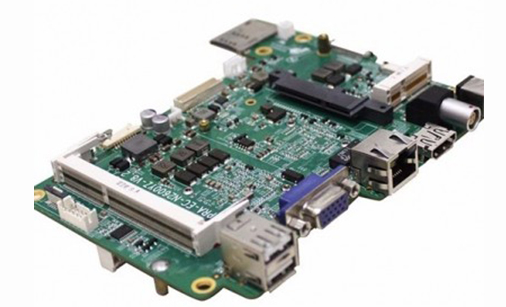The process of PCBA labor and material processing involves a series of processes such as PCB circuit board manufacturing, component procurement and inspection, patch processing, plug-in processing, program firing, testing, and aging. The supply and manufacturing chain is relatively long, and any link is Defects will cause large quantities of PCBA boards to be defective and have serious consequences. Therefore, it is particularly important to control the entire PCBA manufacturing process. This article focuses on the analysis from the following aspects.
1. PCB circuit board manufacturing
It is particularly important to hold a pre-production meeting after receiving a PCBA order. It is mainly to analyze the process of the PCB Gerber file and submit the manufacturability report (DFM) to the customer. Quality problems caused by poor design, resulting in a lot of rework and repair work. Production is no exception,

you need to think twice and do a good job ahead of time. For example, when analyzing PCB files, for some small and fault-prone materials, be sure to avoid higher materials in the structural layout, so that the soldering iron tip is easy to operate during repair; the relationship between the PCB hole spacing and the board's bearing capacity, do not Causes bending or fracture; whether the wiring considers key factors such as high-frequency signal interference and impedance.
2. Component procurement and inspection
The procurement of components requires strict control of channels, and must be picked up from large traders and original factories, and 100% avoid second-hand materials and fake materials. In addition, a special inspection post for incoming materials is set up, and the following items are strictly inspected to ensure that the components are free of faults.
PCB: Reflow soldering furnace temperature test, no flying leads, whether the vias are blocked or leaking ink, whether the board surface is bent, etc.
IC: Check whether the silk screen is completely consistent with the BOM, and keep it at constant temperature and humidity
Other common materials: check silk screen, appearance, power measurement, etc.
The inspection items are carried out according to the sampling method, and the ratio is generally 1-3%
3. SMT processing
Solder paste printing and reflow oven temperature control are key points, and it is very important to use laser stencils of good quality and meeting process requirements. According to the requirements of PCB, some steel mesh holes need to be enlarged or reduced, or U-shaped holes are used to make steel mesh according to process requirements. The furnace temperature and speed control of the reflow soldering is very critical to the solder paste infiltration and soldering reliability. It can be controlled in accordance with the normal SOP operation guidelines. In addition, AOI testing needs to be strictly implemented to minimize the defects caused by human factors.
4. Plug-in processing
In the plug-in process, the mold design for wave soldering is a key point. How to use molds to maximize the probability of good products after the furnace is a process that PE engineers must continue to practice and summarize experience.
5. Program firing
In the previous DFM report, customers can be suggested to set up some test points (Test Points) on the PCB, the purpose is to test the PCB and PCBA circuit continuity after soldering all components. If you have conditions, you can ask the customer to provide a program, and burn the program into the main control IC through a burner (such as ST-LINK, J-LINK, etc.), and you can more intuitively test the effects of various touch actions Functional changes to verify the functional integrity of the entire PCBA.
6. PCBA board test
For orders with PCBA test requirements, the main test content includes ICT (In Circuit Test), FCT (Function Test), Burn In Test (aging test), temperature and humidity test, drop test, etc., according to the customer's test plan. And summarize the report data.
The control knowledge of PCBA manufacturing process is much more than that. Each of the above small points can be expanded and detailed in a longer space. This article only looks at the key control points experienced by a PCBA board from a macro perspective, hoping to help practitioners.